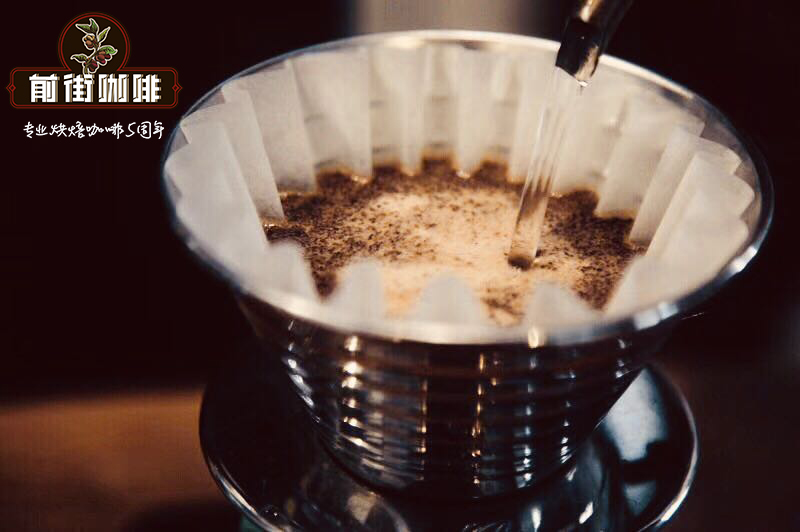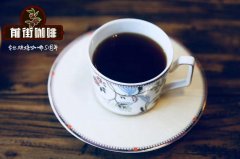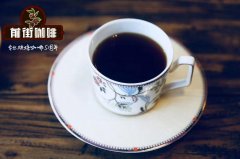Hainan Xinglong coffee beans. The difference between mainland coffee and Taiwan coffee.

Professional coffee knowledge exchange more coffee bean information please follow the coffee workshop (Wechat official account cafe_style)
The two sides of the strait are committed to operating "coffee brands," and the mainland coffee bean producing areas are Yunnan, Hainan, and Guangdong. Among them, Yunnan, with plateau red soil, is suitable for "small-grain coffee." Hainan has a moderate temperature during the day and night, and the coffee is strong but not bitter. "Xinglong Coffee" is the most famous. Taiwan, on the other hand, produces different types of coffee according to altitude, and moves towards the route of "boutique coffee."
The development of coffee in Yunnan can be traced back to 1892, when a French missionary brought coffee beans to Yunnan and successfully planted them in Binchuan County. Yunnan's unique climatic conditions are conducive to the growth of coffee beans. After 1997, 90% of the total coffee output in the mainland came from Yunnan, with an annual output of about 26000 tons. At present, Yunnan coffee still occupies a dominant position in the mainland.
Hainan Island, a tourist attraction on the mainland, not only has beautiful scenery such as sunshine and beaches, but also has excellent coffee quality. In the 1950s, tens of thousands of returned overseas Chinese set up the earliest and largest overseas Chinese farm in Wanning, and introduced the skill of stir-frying coffee in Southeast Asia to Xingxing. In the process of controlling the heat, white sugar, salt and butter were added at the right time to make the fried coffee particularly fragrant. Zhou Enlai even praised, "Xinglong Coffee is world-class!" "
Although the coffee industry in the mainland has gradually developed, it does not directly promote Hainan coffee. Due to many typhoons, high land labor costs, less acreage and other factors, the annual output of coffee beans in Hainan is only nearly 200 tons, mostly concentrated in Xinglong and Fushan. Not only that, non-local coffee beans also impact the development of coffee in Hainan.
Taiwan, which has a tropical and subtropical climate, has a congenital advantage that makes coffee raw beans have a high density and sugar content. At present, there are three major coffee producing areas in Taiwan, including the "high altitude producing areas" of Alishan and Yunlin Gukeng in Chiayi; the "middle and low altitude areas" of Dongshan and Nantou in Tainan; and the "Pacific sea breeze producing areas" in Hualien and Taitung. Rich and exquisite coffee flavor, so that Taiwan coffee repeatedly achieved good results in foreign countries.
Coffee farms in Taiwan are often mixed with fruit trees. in the past, the post-production method of coffee in Taiwan was mainly washed, but in recent years, it has caught up with the third wave of "boutique coffee" in the world. Most estates use methods such as "tanning" and "honey treatment" for post-processing and processing. increase the fruit flavor of Taiwan coffee, and then enhance the brand value of "Taiwan coffee."
Important Notice :
前街咖啡 FrontStreet Coffee has moved to new addredd:
FrontStreet Coffee Address: 315,Donghua East Road,GuangZhou
Tel:020 38364473
- Prev

What is decaf? Will Starbucks' decaf coffee be healthier?
Professional coffee knowledge exchange more coffee bean information Please pay attention to the coffee workshop (Wechat official account cafe_style) Coffee is a necessary drink for many people every day, not only to boost or wake up, but also a kind of life, but many people are afraid that caffeine will keep them awake and can't get access to delicious coffee, is it because you drink the wrong coffee that you are so worried about losing it?
- Next

Yunnan small grains of coffee. How does Yunnan coffee taste? Is Yunnan coffee good?
Professional coffee knowledge exchange more coffee bean information please follow the coffee workshop (Wechat official account cafe_style) Yunnan Coffee is the main and largest coffee producing area in China. At present, Yunnan coffee producing areas are mainly distributed in Simao, Banna, Wenshan, Baoshan, Dehong and other areas in the south and southwest of Yunnan. Pu'er is a small town in Simao and the hometown of Pu'er tea.
Related
- Beginners will see the "Coffee pull flower" guide!
- What is the difference between ice blog purified milk and ordinary milk coffee?
- Why is the Philippines the largest producer of crops in Liberia?
- For coffee extraction, should the fine powder be retained?
- How does extracted espresso fill pressed powder? How much strength does it take to press the powder?
- How to make jasmine cold extract coffee? Is the jasmine + latte good?
- Will this little toy really make the coffee taste better? How does Lily Drip affect coffee extraction?
- Will the action of slapping the filter cup also affect coffee extraction?
- What's the difference between powder-to-water ratio and powder-to-liquid ratio?
- What is the Ethiopian local species? What does it have to do with Heirloom native species?

